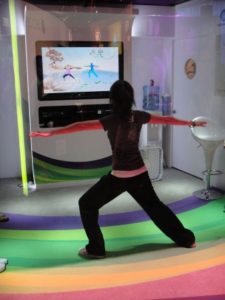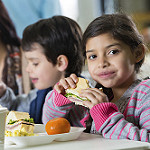
Exergaming versus traditional gym-based exercise

Exercising with the use of an interactive environment might be an interesting alternative to traditional methods of training. In this study, Barry and colleagues examined exercise using an interactive computer-generated environment (exergaming) compared with traditional gym-based exercise for postural control, flow and technology acceptance in healthy adult participants. A total of 44 participants were allocated to either the exergaming group or a traditional gym-based exercise group. The results suggested that exergaming had a bigger potential to improve postural control compared with standard exercise. Therefore exergaming might be employed as a great way of achieving rehabilitation goals and improving postural control.
The benefits of menu labeling
Is menu labeling a potential solution to the obesity epidemic? To investigate this question, Reale and Flint determined the effect of menu labeling on food choice among obese adults. They examined a sample of 61 obese adults motivated to lose weight in order to find out which menu labeling format was the most effective method of promoting healthy eating choices. The first form of menu labeling provided calorie content, the second form supplied information in grams for all seven categories (fat, saturated-fat, protein, carbohydrate, of which sugars, salt and fiber), and the third provided the energy expenditure. Interestingly, participants underestimated calorie content by an average of 303 kcal per meal. The study demonstrates that menu labeling had a positive impact on healthy food choices, with calorie labeling having the strongest impact of the three tested.
Low carbohydrate diet in primary health care

Low carbohydrate diets (LCDs) are commonly recommended approaches for the treatment of obesity and diabetes. This study by Barabas et al. investigated the knowledge of healthcare professionals about LCDs in obesity treatment in a Swedish primary healthcare setting. Although an LCD is suggested to have a positive effect in both diabetes care and weight loss, surprisingly a low number of healthcare professionals recommended an LCD for weight loss. Physicians and diabetes nurses were more eager to recommend the diet, whereas trained lifestyle counselors were the least keen. The study showed that healthcare professionals had differing attitudes towards a diet low in carbohydrates with their main concerns being a lack of scientific knowledge of the side- and long-term effects of such a diet. The authors suggest that additional education and medical training might have a positive impact on the awareness of LCDs in obesity treatment.
Kids’ meals from Canadian chain restaurants

In the past three decades the prevalence of childhood obesity has increased significantly. The consumption of outside-the-home prepared meals is believed to be one of the obesity contributors. Using data from the University of Toronto Restaurant Database, this article reports the nutritional quality of kids’ meals from seven sit-down restaurants and ten fast food chains in Canada. The results indicated that kids’ meals from both types of restaurant contain high levels of sodium and saturated fat as well as being high in calories. Portions served in sit-down restaurants were bigger compared with fast-food places; however, when standardized per 100 g, sit-down restaurants served meals of a lower calorie and sodium content. These findings suggest that dealing with the poor nutritional quality of restaurant kids’ meals should be regarded as part of an obesity battle and a major public health goal.
Pedometer use in a cardiac telerehabilitation program

People suffering from various cardiac diseases might employ pedometers to set activity goals, measure walking activity and improve their overall physiological and psychological health. In this study, Thorup and colleagues enrolled patients involved in a cardiac telerehabilitation program to investigate pedometer use and self-determined motivation for walking. A total of 11 patients, five nurses and six physiotherapists took part in the study and, thanks to the pedometer, the patients could tailor physical activity to their needs and lifestyle. Visible steps enhanced the awareness of walking activity and enabled them to set realistic goals and thus pedometers helped the patients to change their lifestyle into a healthier one, where walking activity became a daily routine.
A crucial time in the life of students
‘Freshman 15’ refers to the phenomenon that students gain on average 15lbs (6.8kg) over their first academic year. In this study, Vadeboncoeur and colleagues evaluated weight change among first year university students. They recruited 215 students from 23 universities in England asking them to report their weight at three time points: (i) at the beginning of academic year, (ii) before Christmas, and (iii) at the end of academic year. They observed an increase in weight by 0.98 kg over the period of an academic year and, interestingly, there was no significant difference in mean weight change rate between females and males (+1.04 kg and +0.85 kg respectively). These findings suggest that the first year at university appears to be a crucial time when people tend to gain weight; therefore universities must acknowledge their role in promoting healthy behaviors among students in order to prevent the obesity epidemic.

Comments